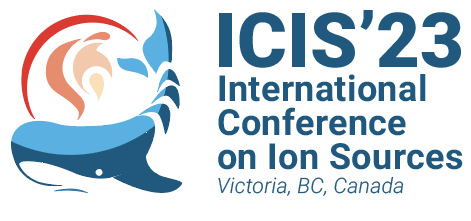Speaker
Description
We have been experimentally measuring the charge state distribution of the multiply-charged ion current generated and extracted from an electron cyclotron resonance (ECR) ion source (ECRIS), and plasma parameters such as electron density, electron temperature, and space potential of the plasma in the ECRIS, and then investigating the correspondence between them. According to the accessibility conditions of wave propagation in the magnetized ECRIS plasma, it is speculated that the essential factor that determines the limitations in the multiply charged ion current in the current ECRIS is not simply the ordinary wave cutoff (O-cutoff) density, nor the right-hand polarization wave cutoff (R-cutoff) density, but rather the higher density limit one, i.e., the left-hand polarization wave cutoff (L-cutoff) density where electromagnetic waves no longer can exist. Therefore, it is necessary to overcome this limitation in the ECRIS, other than the conventional method of simply increasing the frequency and the magnetic field strength. One direction is developing conventional dual-frequency heating, i.e. high frequency resonance, which is a conversion from electromagnetic waves to electrostatic waves with no cutoff. The other direction is the introduction of ion cyclotron resonance (ICR) or lower hybrid resonance (LHR) by introducing electromagnetic waves at very lower frequencies than ECR’s one, which has no density limit in a more intrinsic sense. In the case of ion heating, we conduct heating low-mass ions selectively in enhanced producing multiply charged ion by mixing low-mass element gas, which has been conventionally performed in ECRIS, or relaxation of the potential well based on the existence of resonant electron particles by ECR. We aim to improve the efficiency of multiply-charged ion generation based on this method. This paper will describe the initial experimental results of ICR application by introducing low-frequency RF electromagnetic waves in the ECRIS.
| I have read the Code of Conduct to attend ICIS2023. | Yes |
|---|

